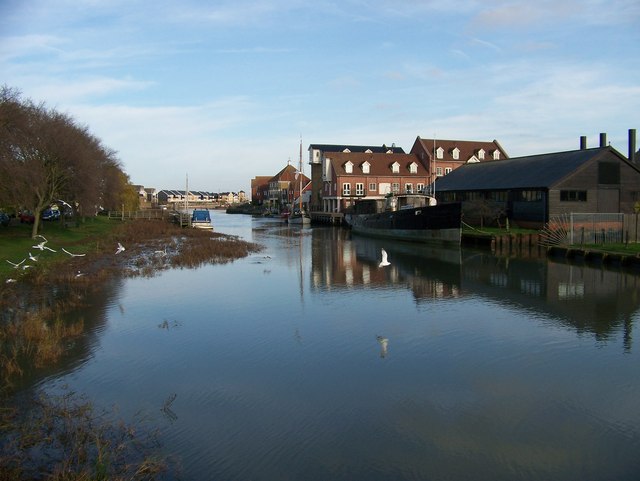Faversham used to be a busy port until the creek on which it is situated silted up, although there is still a quay called Standard Quay with moorings for yachts and barges. The town has many listed buildings, and was a popular stopover for pilgrims on their way to Canterbury. The gunpowder industry brought new prosperity to the town, and the 18th century Chart Gunpowder Mills, which remained in use until the 1930s, tells the story of the industry and its significance for the town. Another local producer which may be of interest to real ale enthusiasts is the
Shepherd Neame Master Brewers, whose ales include Spitfire, whose sales have helped armed forces charities such as Help For Heroes. The brewery, which is the oldest in the country, was founded in 1698, although its heritage stretches back even further. Brewery tours are available to visitors. Inevitably, a historic town such as Faversham will have its ancient pub with associated ghost stories. The Shipwrights Arms overlooking the surrounding marshes and creeks near Faversham is haunted by a seafaring gentleman wearing a reefer jacket who has been known to wander into the bar. There is a theory that the ghost is of a Cornish captain called Frederick Symes whose ship was wrecked and who trekked across the marshland only to collapse and die outside the pub. The TV medium Derek Acorah once came to film at the pub and claimed to have made contact with Frederick.
Graveney Marshes is an area of mudflats and grassland to the north-east of Faversham, incorporating the
South Swale Nature Reserve. Large numbers of waders and wildfowl visit during winter. Beside the sea wall, the grassland forms part of the
Saxon Shore Way walking trail. As well as nature, the marsh is famous for a wartime battle, the Battle of Graveney Marsh in September 1940, which turned out to be the last action by a foreign invasion force to take place on British soil.
Map of the area.
 |
Looking towards the coast from the swing bridge - geograph.org.uk - 1066272. Photo by Elliott Simpson, via Wikimedia Commons.
|

No comments:
Post a Comment